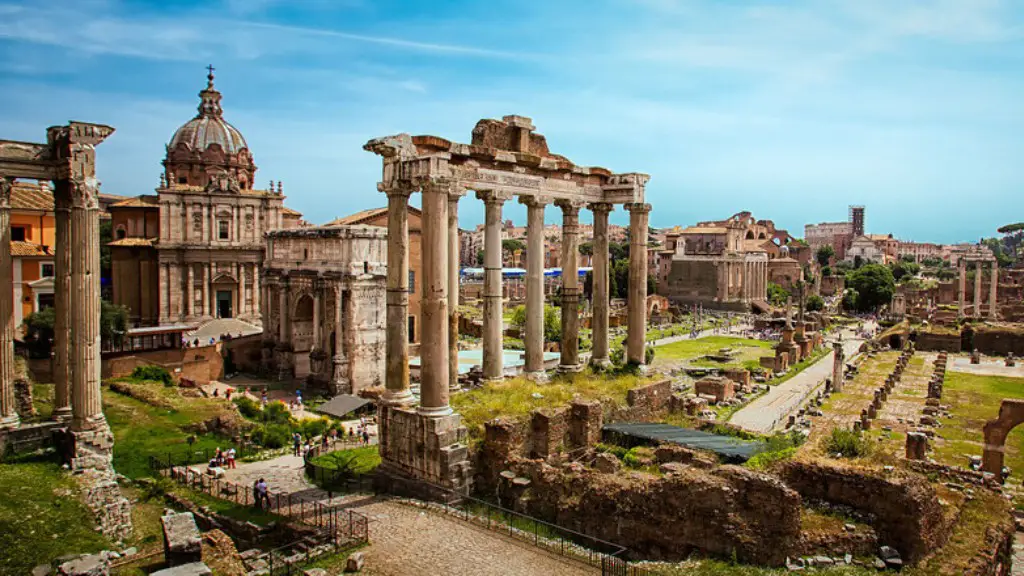Slave labor in Ancient Rome has become an indelible stain on the Roman Empire. While in modern times slavery has been frowned upon and outlawed, it was a fact of life for centuries in Ancient Rome. The Roman Empire had more slaves than the today’s largest slave owners due to the conquering of other nations, the need for cheap labor for farming and manufacturing, and the taxation of the working class.
Slaves in Ancient Rome were usually prisoners of war or people who were sold into slavery by their captors. They were often crammed into ships and taken on treacherous journeys, or worked as farm labor, domestic servants, and live-in housekeepers. As slaves, they had little to no rights, and were terribly mistreated by their owners. More often than not, they were forced to work in poor conditions with little to no pay. Slaves had no ownership over anything they made and could not marry, own property or start businesses because they were considered property.
Slaves could be beaten into submission, sexually abused, killed and even crucified. Although there were some laws in place to help protect them, those laws were rarely enforced and slaves were still mistreated. Even if a slave was treated well by their owner, they would still be looked down upon by other citizens of Rome.
In order for a slave to gain freedom, it would usually involve purchasing it from their master or being set free as a gift. There were also times when a slave could make enough money to purchase their own freedom, although this was a rare occurrence.
This harsh and cruel treatment of slaves has been criticized by historians, with some noting that it was a sign of the extreme inequality of the Roman Empire. The rise of Christianity in Rome also encouraged some masters to treat their slaves with more kindness and humanity.
Economic Impact
The use of slave labor had a major economic impact on Ancient Rome. Slave labor enabled the Roman Empire to rapidly expand its wealth and power by having a stable and abundant source of cheap labor. The use of slave labor also enabled the Roman government to pay its citizens less and extract more taxes from them.
The use of slaves also allowed the Roman Empire to quickly build its infrastructure and military forces, further helping it to become a major power. Slaves were often used to build roads, bridges and monuments, as well as for mining and working in factories.
Legal System
While there were some laws in place to regulate the treatment of slaves, it was mostly left up to the master to decide what punishment or discipline they would inflict on them. Slaves could be tortured, punished and even killed with impunity. Slaves were also subject to being sold or transferred to another owner upon the death of their previous master.
The legal system offered some limited protection to slaves, however. Masters could not kill their slaves arbitrarily, and if a slave was accused of a crime they were often given the chance to prove their innocence before being convicted.
Religious Impact
The rise of Christianity in Ancient Rome impacted the slave labor system as it preached against abuse and mistreatment of slaves. Early Christian writings such as the Epistle of Peter to the Philippians, the Gospel of Thomas and the Acts of the Apostles show evidence of a call for more humane treatment of slaves.
The teachings of Christianity also encouraged masters to let go of their slaves, often as a way of gaining more favor from God. These teachings made it easier for slaves to purchase their own freedom, or receive it as a gift from their masters.
Abolition of Slavery
Despite the efforts of early Christian leaders, slavery did not officially end in Rome until the 7th century A.D. when Emperor Justinian declared slavery illegal. This edict, known as the Edict of Justinian, was later codified in the Corpus Juris Civilis.
This was a major event as it officially ended the era of slavery in Rome and would have a lasting impact on both the Roman Empire and the world. However, it would take centuries before slavery was fully abolished and it still exists in some parts of the world today.
Historical Reception
The use of slave labor in Ancient Rome has been the subject of much debate among historians. Some historians criticize the use of slave labor and believe it was a sign of the extreme inequality of the Roman Empire. Others suggest that it helped the Roman economy to thrive and that without it, the Roman Empire may not have been as successful as it was.
However, most historians agree that the treatment of slaves was barbaric and inhumane, and that, while it was a common practice in Ancient Rome, it should never be allowed to happen again.
Social Impact in Modern Times
today, the social, economic and religious impact of Ancient Rome’s slave labor system still impacts our world today. For starters, many of the businesses and countries that have used slave labor have faced harsh criticism and boycotts in the past.
The use of slave labor also leads to gaps in social and economic inequality. Today, countries that rely on cheap labor to fuel their economies are often criticized for their poor labor laws and lack of protection for workers.
Furthermore, some of the legacies of slavery still linger in today’s world, contributing to inequality and lack of education, health care access and housing.
Conclusion
In conclusion, slave labor in Ancient Rome was a harsh, inhumane system that allowed the Roman Empire to gain wealth and power quickly, but it came at a tremendous cost for the slaves. The repercussions of this cruel system can still be felt in modern times and it serves as a reminder of how easily oppression can become entrenched in society.

